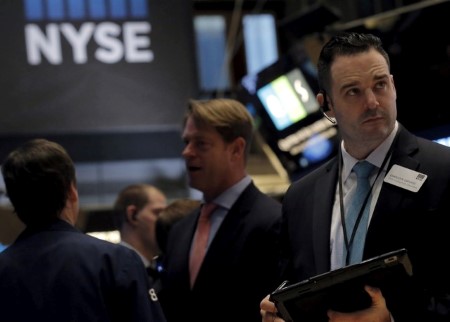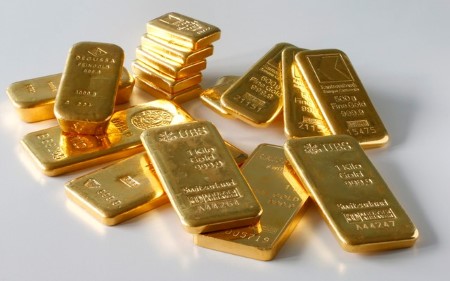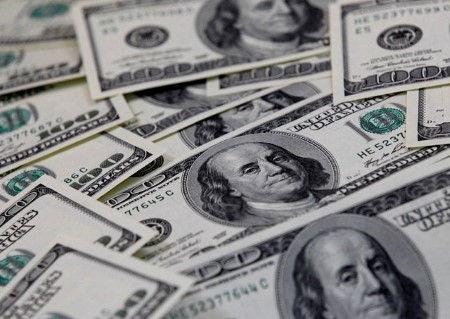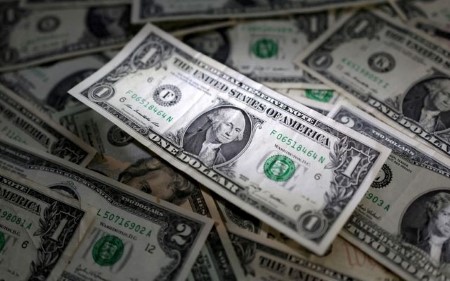NEW YORK, Sept 22 – A hawkish stance from the Federal Reserve, soaring Treasury yields and a looming government shutdown are adding to a cocktail of risks that has spooked investors and clouded the outlook for US equities.
US stocks have slid more than 6% from their late July highs, and the past week has been particularly nerve-wracking for investors. The Fed projected it would leave interest rates at elevated levels for longer than expected, sparking selloffs in US stocks and bonds.
The S&P 500 tumbled 2.9% this week, its biggest weekly decline since March. Investors sold global equities at the fastest rate this year, with a net USD 16.9 billion leaving stocks in the week to Wednesday, data from BoFA Global research showed. The index is up 12.8% year-to-date.
“We’ve had resilient growth for the summer months but we’re running into a period where there’s significant risk to the economy,” said Charlie Ripley, senior investment strategist for Allianz Investment Management. “Investors are seeing a reason to take risk off the table and that’s going to diminish some appetite” for stocks, he said.
Yields on the benchmark US 10-year Treasury, which move inversely to prices, stand near 16-year highs. High Treasury yields dull the allure of stocks by offering investors an attractive payout on an investment seen as virtually risk-free.
Market participants are also grappling with several potential threats to US economic growth, whose resilience this year has helped push stocks higher. Foremost is the challenge presented by higher rates, if the Fed follows through on its pledge to keep borrowing costs elevated as it seeks to decisively turn the tide on inflation.
“The Fed is overly confident in the soft-landing narrative,” said Brian Jacobsen, chief economist at Annex Wealth Management. “A confident Fed is a dangerous Fed because it will ignore early signs of weakness.”
Other risks include high oil prices, a resumption of student loan payments in October and a government shutdown that is set to begin if lawmakers are unable to pass a budget by Sep. 30.
Seasonal factors also look grim, at least for the near term. The S&P 500 entered what has historically been its weakest 10-day stretch of the year on Sept. 18, according to BofA Global Research. The index has historically fallen by 1.66% over the period when performance during the first 10 days of the month is below average, as it has been this year, the bank’s data showed.
“Seasonality shows nasty down days into October,” BoFA’s analysts wrote, noting however that declines could provide opportunities for dip buyers.
Meanwhile, a drawn-out government shutdown could aggravate concerns over US government gridlock and send Treasury yields even higher. Early this year, lawmakers waged a protracted battle to raise the debt ceiling. This drew a credit downgrade from ratings agency Fitch, analysts at Societe Generale wrote.
Higher yields could exacerbate the headwinds to stocks, which have struggled as yields surged over the past several weeks.
Of course, strategists’ metrics have shown there is plenty of cash on the sidelines to be deployed by investors looking to buy on weakness. Buyers would likely step in if the S&P 500 fell to 4,200, which is about 3% from current levels, said Keith Lerner, co-chief investment officer at Truist.
Such a decline would put the index at a 17.5 price-to-earnings ratio, in line with its 10-year average, he said in a Friday report.
“We anticipate, at least initially, buyers would come in around this vicinity … to help contain short-term weakness,” he said.
Adam Turnquist, chief technical strategist for LPL Financial, remained optimistic in a late Friday report even though most momentum indicators he tracks – including market breadth – have turned bearish. He noted that the S&P 500 remains above its 200-day moving average and there have been few signs of investors fleeing to safety.
“Overall, the market is down but not out,” he wrote. “Pullbacks are entirely ordinary within the context of a bull market.”
(Reporting by David Randall; Editing by Ira Iosebashvili and David Gregorio)







 DOWNLOAD
DOWNLOAD











